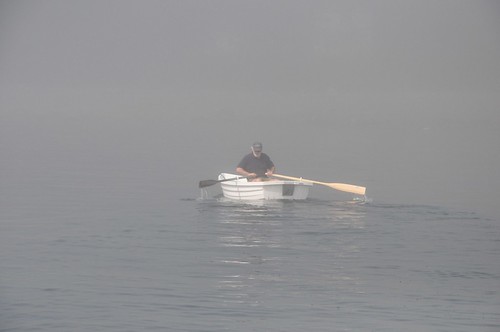 |
| The document is also on Scribd. |
A Sparked Guide to Official Organization
[Version 2.0 - Included the application with the Florida Department of Agriculture and Consumer Services.]
Recently at an appointment with an awesome couple launching their own cause-driven non-profit, they asked me to help them with their official organizing documents. Having done this a handful of times, I had some resources they could use.
Following is the information I sent to them. Get the information now. Use the documents listed as this will go up on
StateoftheSpark.com and
Scribd.com soon as a paid document.
As a sidebar, to make sure your organization is formed exactly the way you want, I would always recommend that you consult a lawyer. (If you are in the Lakeland area, you could use the guy I used,
Sam.)

This is the general outline of what the process looks like.
Things to Keep in Mind:
- Articles of Incorporation
- Cost: $35 is the minimum fee. Get copies of your documents once they are posted online by clicking the PDF download and printing from there. Get additional, stamped hard copies sent directly to you from the State office for additional fees.
- Apply Offline: Do this OFFline because applying online has set, standard Articles of Incorporation. This looks well and good, but when you get to Step 3, applying for the 501(c)3, you will be required to have specific language in your Articles of Incorporation. That will require you to file an Articles of Amendment which, typically, can only be done offline anyway. Save yourself the time and money; apply offline first.
- Apply with the Department of Agriculture and Consumer Services
- Cost: The fees start at $10. The first year most organizations will only pay this. There is a sliding scale of up to $400.
- Apply Offline:
- Get the form here.http://www.800helpfla.com/socbus.html
- The Department does not offer the option to register your charity online yet.
- Renew Annually!
- Obtain EIN
- Go here: https://sa2.www4.irs.gov/modiein/individual/index.jsp
- You should be familiar with the IRS website and everything having to do with Nonprofits. That link will take you directly to the application. But take your time to get familiar with the website; they have great resources.
- Apply 501(c)3
- This is a 25 page document that will require additional sheets when you are completed. Take your time with it! You currently only have 3 times you can reapply until you have to pay the $750 fee again!
- Working with a lawyer can seriously cut down on the time it takes and can help you become confident that you are forming the type of entity you want to form.
Checklist:
- Check the USPTO.gov.
- Verify your trademark, brand, name, and phrasing are available by doing a search.
- I recommend applying online if possible before forming your company. I had a friend who lost his entire brand and $8,000 of product because this was not established first.
- Check your website domain availability.
- Go to http://www.whois.com/.
- See if your domain name is available.
- If it is not, try variations of your slogan or phrase.
- If you are still stuck, the WhoIs information will be available for you to consider contacting the current owner.
- Apply to the State.
- Download the form from your state’s website. (Here in Florida.)
- Add the language required by the IRS for Public Charities.
- Dissolution Clause
- An example is included in this document.
- Purpose Clause
- Pull language from the IRS website for Tax-Exempt purpose.
- An example is included in this document.
- Conflict of Interest Policy
- This will ultimately be part of your By Laws. You can avoid this on your application for the 501(c)3, but you will have to answer additional questions.
- An example is included in this document.
- Limitations Clause
- This clause will simply ensure that your organization will limit its actions to be in accordance with its tax exempt purposes.
- An example is included in this document.
- Apply to the Department of Agriculture and Consumer Services
- Get the form here: http://www.800helpfla.com/socbus.html
- Select ‘Registration for Charitable Organizations’.
- Fill out.
- Include your fee.
- Mail to the Dept of Ag & Consumer Services.
- You do not have to wait to receive this before applying for your EIN.
- Apply for an EIN.
- https://sa1.www4.irs.gov/modiein/individual/index.jsp
- Follow the prompts.
- Apply for your 501(c)3.
- Download the Form 1023 from the IRS website.
- Step by step, fill out each of the questions in detail.
- I have included several examples of actual applications for you to use.
- I highly recommend working with an experienced lawyer on the application. If you are on a budget, however, you can feel confident that these two applications were actually used.
- Contact us if you have any questions.
Examples of Articles
Language for Your State Articles of Incorporation Required by the IRS
Purpose
Said corporation is organized exclusively for:
CHARITABLE, RELIGIOUS, EDUCATIONAL, AND SCIENTIFIC PURPOSES, INCLUDING FOR SUCH PURPOSES, THE MAKE OF DISTRIBUTIONS TO ORGANIZATIONS THAT QUALIFY AS EXEMPT ORGANIZATIONS UNDER SECTION 501(C)(3) OF THE INTERNAL REVENUE CODE, OR THE CORRESPONDING SECTION OF ANY FUTURE FEDERAL TAX CODE.
Board of Directors
Section 1 — BOARD ROLE, SIZE AND COMPENSATION:
Role
The board is responsible for overall policy and direction of the organization, and assigns responsibility of day-to-day operations to the staff.
Size
The board shall have up to 12, but not fewer than 3 members.
Compensation
Board members do not receive compensation, except the Executive Director.
a. The Executive Director receives reasonable compensation approved by the board in accordance with the Conflict of Interest policy.
b. Compensation shall be approved in advance of paying compensation.
c. The approval process will be documented in writing, recording the decision made by each individual.
d. Compensation amount will be approved by basing compensation of similarly situated taxable and tax-exempt organizations for similar services.
e. The information on which was relied to base and its source(s) will be documented in writing.
Section 2 – INITIAL DIRECTORS
The initial Board of Directors is as follows:
Name: _____________________ Address: ____________________________________________________
Name: _____________________ Address: ____________________________________________________
Name: _____________________ Address: ____________________________________________________
Section 3 – POWERS
The Board of Directors shall govern the Corporation, and shall have all the rights and powers of a board of directors under the laws of the State of Florida and of the United States, as well as such other rights and authority as are herein granted. Such rights and powers shall include, but not be limited to, the power to adopt and amend the by-laws and other corporate governing documents, by a majority vote, in any way not inconsistent with the Articles of Incorporation, the laws of the State of Florida, or the laws of the United States.
Section 4 — TERMS:
All board members shall serve two-year terms, but are eligible for reappointment for up to five consecutive terms.
Section 5 — MEETINGS AND NOTICE:
The board shall meet at least quarterly, at an agreed upon time and place.
Section 6 — BOARD APPOINTMENT:
During the last quarter of each fiscal year of the corporation, the Executive Director of the Corporation shall appoint Directors to replace those whose terms will expire at the end of the fiscal year.
Section 7 — OFFICERS AND DUTIES:
There shall be a minimum of three officers of the board, consisting of a executive director, secretary and treasurer.
Section 8 — RESIGNATION, TERMINATION AND ABSENCES:
Resignation from the board must be in writing and received by the secretary. A board member can be terminated from the board due to excess absences, more than two unexcused absences from board meetings in a year. A board member may be removed for other reasons at the sole discretion of the Executive Director.
Limitations
At all times the following shall operate as conditions restricting the operations and activities of the corporation:
1. No part of the net earnings of the corporation shall inure to the benefit of, or be distributable to its members, trustees, officers, or other private persons, except that the corporation shall be authorized and empowered to pay reasonable compensation for services rendered and to make payments and distributions in furtherance of the purposes set forth in Article Third hereof.
2. No substantial part of the activities of the corporation shall be the carrying on of propaganda, or otherwise attempting to influence legislation, and the corporation shall not participate in, or intervene in (including the publishing or distribution of statements) any political campaign on behalf of or in opposition to any candidate for public office.
3. Notwithstanding any other provision of these articles, the corporation shall not carry on any other activities not permitted to be carried on (a) by a corporation exempt from federal income tax under section 501(c)(3) of the Internal Revenue Code, or the corresponding section of any future federal tax code, or (b) by a corporation, contributions to which are deductible under section 170(c)(2) of the Internal Revenue Code, or the corresponding section of any future federal tax code.
Dissolution of Assets
Upon the dissolution of the corporation, assets shall be distributed for one or more exempt purposes within the meaning of section 501(c)(3) of the Internal Revenue Code, or the corresponding section of any future federal tax code, to the legitimate local government where the corporation dominantly served as determined by the Board of Directors for a public purpose. Any such assets not so disposed of shall be disposed of by a Court of Competent Jurisdiction of the county in which the principal office of the corporation is then located, exclusively for such purposes or to such organization or organizations, as said Court shall determine, which are organized and operated exclusively for such purposes.
Debt Obligations and Personal Liability
No officer or director of this corporation shall be personally liable for the debts or obligations of this corporation of any nature whatsoever, nor shall any of the property of the members, officers or directors be subject to the payment of debts or obligations of this corporation.
Documents You Will Need
As promised, following are the documents you will need.
Florida Applications:
FORM 1023 [Applying for 501(c)3]:















